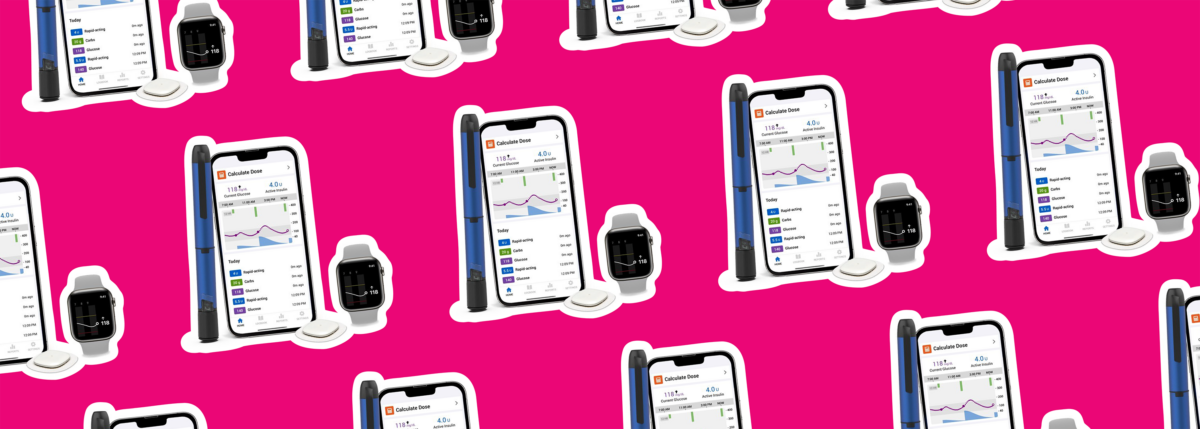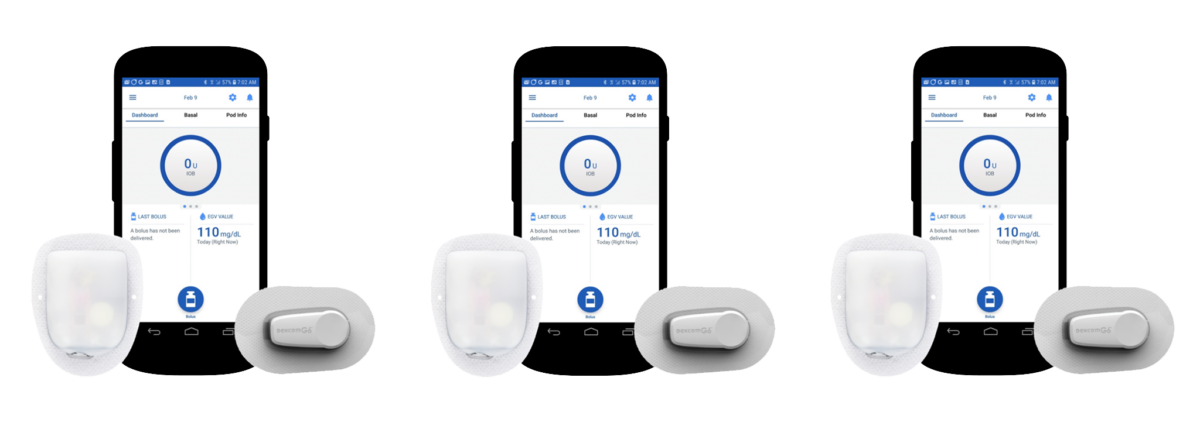Another Reminder that Racial/Ethnic Inequality Exists in Diabetes Care
Written by: Ginger Vieira
9 minute read
June 6, 2022
Coverage of the ADA Scientific Sessions is brought to you by the ADA x BT1 Collab.
Over the last 20 years, the diabetes industry has seen significant advancements in medications and technology to treat any type of diabetes. Despite these advancements, a patient’s race and ethnicity still prove to dramatically affect their access to these life-saving tools.
Here, experts discuss some of the key factors that drive these racial and ethnic inequities in diabetes care.
Presentation: Disparities in the Use of Diabetes Medications and Technologies
Speakers at this ADA Scientific Sessions presentation included: Colette Dejong, MD (University of California), Sara Jane Cromer, MD (Mass. General Hospital) and Ananta Addala, DO, MPH (Stanford University).
Drivers of Racial Inequities Include: Cost + Provider Bias
Despite the variety of modern insulin options available today, insulin rationing is becoming all too common with insulin prices at an all-time high.
Insulin rationing is simply when a person intentionally reduces their insulin doses to prevent running out. Insulin rationing can easily lead to dangerously high blood sugar levels, diabetic ketoacidosis (DKA), and the need for emergency care to receive intravenous fluids and insulin.
A variety of studies have been conducted on insulin rationing amongst people with type 1 and type 2 diabetes. Here are results from some of those studies—many of which came from data collected by the T1D Exchange Patient Registry:
- Insulin rationing is significantly higher in non-white patients.
- Insulin rationing is significantly higher in those on public health insurance.
- 61 percent of people on Medicaid are non-white: Black, Hispanic, Asian-American
- 50% of people with T1D reported rationing insulin regularly
- 25% of people with type 1 diabetes (T1D) and type 2 diabetes (T2D) rationing insulin were of low-income status.
- Insulin rationing is significantly more common in the USA compared to Canada and the United Kingdom—both of which have universal healthcare systems.
- One out of every three people coming to the emergency department for severe hyperglycemia was rationing insulin.
- When patients ration insulin, it affects their physical and mental health substantially.
- 37 percent of people with T1D and T2D ration both insulin and test strips.
“Cost-related underuse of insulin—and other diabetes medications—is more common in racial and ethnic minority individuals,” explained Sara Jane Cromer, MD. “It’s associated with [higher blood sugar levels] and possibly with hyperglycemia emergencies.”
Racial Differences in the Prescribing of Modern Insulin
“Use of newer and more costly analog basal insulins is less common among racial and ethnic minorities,” explains Cromer. In her research, Cromer illustrates that non-white patients with diabetes are still being prescribed the oldest insulins available despite the improved function and safety of newer insulins.
Types of basal (long-acting) insulin available today:
Analog (Lantus, Basalgar, Tresiba, Levemir, etc.)
- FDA-approved in 1996
- Associated with fewer hypoglycemic events
- Higher rate of reaching personal blood sugar targets
- More stable, predictable and flexible in function
- Significantly more expensive
NPH (Human insulin)
- FDA-approved in 1946
- Associated with more hypoglycemic events
- Lower rate of reaching personal blood sugar targets
- More variable, unpredictable and rigid in function
- Price has not changed by much in decades.
- Significantly more affordable
Over the last 20 years, the use of modern analog insulins has risen dramatically—with over 80 to 85 percent of people with diabetes taking analogs.
The population with the highest use of NPH insulin is Black and Hispanic Americans, regardless of their insurance type or education level.
“Use of newer and more costly analog basal insulins is less common among racial and ethnic minorities,” explains Cromer.
Racial Differences in the Prescribing of GLP-1 agonists + SGLT-2 inhibitors
The treatment paradigm for type 2 has changed drastically over recent years.
Cromer highlighted the significant research proving that both GLP-1 agonists and SGLT-2 inhibitors can help treat atherosclerotic cardiovascular disease (ASCVD) and kidney disease in people with diabetes.
“Novel medications for diabetes with proven cardiovascular benefit are less commonly used by racial and ethnic minorities in both a general diabetes population and a population with cardiovascular indications for treatment,” explains Cromer.
In other words, non-white patients who would benefit from GLP-1s and SGLT-2s just to treat type 2 diabetes and those who would doubly benefit—because they have cardiovascular and kidney conditions—are not being prescribed these medications.
“Failure to treat with these medicines can result in a failure to prevent cardiovascular events,” says Cromer. She pointed to research that concluded thousands of cardiovascular events could’ve been prevented if patients were taking these medications.
Potential factors that contribute to lower rates of prescribing these medications in non-white populations:
- Provider’s failure to suggest or prescribe medication based on implicit/explicit racial and ethnic biases
- Provider’s assumptions regarding the patient’s ability to afford or correctly use the medication
- Provider’s lack of referring patient to a specialist based on assumptions regarding the patient’s ability to afford the appointment or willingness to attend
- Patient declines medication based on racial/ethnic beliefs related to medicine
- Patient’s lack of insurance or approval for medication / continuous glucose monitor
- Patient’s limited health education
- Patient’s general distrust of the healthcare system and physicians due to experiencing racial bias
- The rising cost of medications
- Lack of funding in hospitals serving minority populations
- Hospitals serving minority populations may train providers to prescribe cheaper, older medications
- Physicians of color are held to a different standard or asked to perform extra unpaid duties (referred to as a “minority tax”)
- Pharmacy deserts: the patient does not have easy access to actually fill a prescription
- Lack of recruitment of minority populations in clinical trials on new medications
- Racial biases in risk prediction calculators regarding new medications
“We must each work to understand our own biases and behaviors,” encouraged Comer, who suggested that every healthcare provider—whether intentional or not—may hold beliefs about a patient based simply on their race or ethnicity.
Racial Differences in the Prescribing of CGMs + Pumps
The lower rates of continuous glucose monitors (CGMs) and insulin pumps used by Black and Hispanic Americans with diabetes are eye-opening.
For example, the results of one study, “Racial-Ethnic Disparities in Diabetes Technology use Among Young Adults with Type 1 Diabetes,” included the following about CGM and pump use:
- 72 percent (pump) and 71 percent (CGM) white young adults with T1D
- 40 percent (pump) and 37 percent (CGM) Hispanic American young adults with T1D
- 17 percent (pump) and 28 percent (CGM) Black American young adults with T1D
When Hispanic and Black American young adults with T1D were asked about their decisions to use or not use insulin pumps or CGMs, responses included:
- “I’ve never had [an insulin pump] mentioned to me or brought up.”
- “I’ve heard about [CGMs] but [it] was never offered until I met with my recent doctor.”
- “Yeah, I just got offered that recently when I went to my doctor on Wednesday. Never before, and I’ve had [T1D] for a year and a half. I didn’t know the technology existed.”
Another startling set of quotes from non-white patients presented by Ananta Addala, DO, MPH, included:
- “I would prefer an insulin pump because I think [it] would help me control my diabetes, but since I’ve been deemed uncontrollable [by an endocrinologist], the chance is that I can’t get one.”
- I went and asked for a CGM, [my doctor] said, ‘Well, are you too lazy to test your blood glucose?’”
“The probability of getting a pump as a child with type 1 diabetes is significantly higher in whites,” said Addala. Considering this technology can lead to significant improvements in A1c, lower rates of hospitalizations and a reduced risk of diabetes complications, access to this technology matters.
Cromer pointed again to implicit or explicit beliefs a provider may hold about a certain patient based on their race or ethnicity and how it influences their decision to encourage and educate patients on newer technology and medicine.
“While we all seek to provide the absolute highest level of care, we all have implicit biases about what a patient may or may not be able to do, may or may not want to do,” said Cromer. “It’s important that we examine those biases within ourselves.”
Related Resources

On November 20, 2024, Medtronic received FDA clearance for its latest InPen app. This advancement...
Read more

Eli Lilly and Company is helping patients and caregivers understand important changes to Medicare Part...
Read more

Already compatible with Dexcom’s G6 and G7 continuous glucose monitors (CGMs), the Omnipod 5 Automated...
Read more


